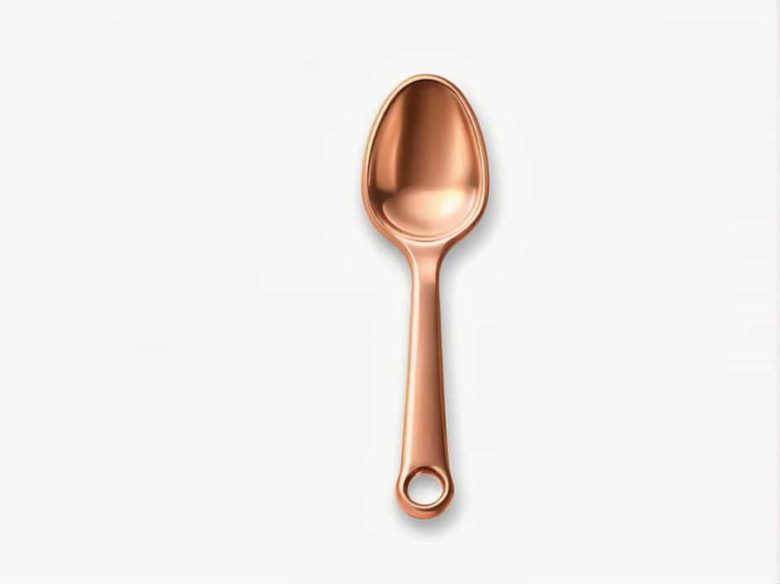Electroplating is a process used to coat metal objects with a thin layer of another metal using an electric current. One common example is copper electroplating where an iron spoon is coated with copper for decorative purposes corrosion resistance or conductivity improvement.
This topic explains the electroplating process materials required and step-by-step instructions for electroplating an iron spoon with copper. It also covers the chemical reactions involved and factors affecting plating quality.
What Is Electroplating?
Electroplating is a process in which a metal object is coated with a thin layer of another metal by passing an electric current through an electrolyte solution. This technique is widely used in industries such as automotive jewelry making and electronics.
In the case of copper electroplating copper ions in the electrolyte solution are deposited onto the surface of the iron spoon. This results in a smooth shiny and corrosion-resistant copper coating.
Materials Required for Copper Electroplating
To electroplate an iron spoon with copper you will need the following:
✔ Iron Spoon – The object to be plated.
✔ Copper Plate or Copper Wire – Acts as the anode (source of copper).
✔ Copper Sulfate (CuSO₄) Solution – The electrolyte that provides copper ions.
✔ Sulfuric Acid (H₂SO₄) (Optional) – Enhances conductivity and plating efficiency.
✔ Power Supply (DC Source or Battery) – Provides the necessary electric current.
✔ Beaker or Container – Holds the electrolyte solution.
✔ Wires and Alligator Clips – Connect the electrodes to the power supply.
Step-by-Step Process of Electroplating an Iron Spoon with Copper
Step 1: Cleaning the Iron Spoon
- Remove dirt grease and oxidation from the spoon’s surface to ensure proper adhesion of the copper layer.
- Wash the spoon with soap and water then rinse it with distilled water.
- Dip the spoon in diluted sulfuric acid or vinegar to remove any oxide layer.
- Dry the spoon completely before proceeding.
Step 2: Preparing the Electrolyte Solution
- Fill a beaker with copper sulfate solution.
- Add a few drops of sulfuric acid to increase conductivity (optional but recommended).
- Stir the solution until fully mixed.
Step 3: Setting Up the Electroplating Circuit
- Connect the copper plate (anode) to the positive terminal of the power supply.
- Connect the iron spoon (cathode) to the negative terminal.
- Submerge both electrodes into the electrolyte solution without touching each other.
Step 4: Applying the Electric Current
- Turn on the power supply and set it to a low voltage (2-5V).
- Copper ions from the anode dissolve into the solution and migrate to the spoon forming a thin copper layer.
- Let the process continue for 10-30 minutes depending on the desired thickness.
Step 5: Finishing the Electroplated Spoon
- Turn off the power supply and remove the spoon from the solution.
- Rinse the spoon with distilled water to remove excess electrolyte.
- Dry the spoon and polish it with a soft cloth for a smooth finish.
Chemical Reactions in Copper Electroplating
During electroplating the following reactions occur:
At the Copper Anode (Oxidation Reaction):
(Copper dissolves into the electrolyte as copper ions.)
At the Iron Spoon Cathode (Reduction Reaction):
(Copper ions gain electrons and deposit onto the iron spoon as a solid layer.)
Factors Affecting the Quality of Copper Electroplating
Several factors influence the quality and uniformity of the copper coating:
1. Voltage and Current
- A low voltage (2-5V) ensures a smooth and even coating.
- High voltage can cause rough or uneven plating.
2. Electrolyte Composition
- Pure copper sulfate solution provides high-quality plating.
- Impurities in the electrolyte can lead to patchy deposits.
3. Duration of Electroplating
- Longer plating times result in thicker copper layers.
- Short plating times may lead to thin and weak coatings.
4. Distance Between Electrodes
- Keeping a moderate distance between the spoon and copper anode ensures uniform plating.
- Electrodes too close may cause irregular deposition.
5. Surface Preparation
- A clean grease-free surface ensures strong adhesion of the copper layer.
- Oxidation or dirt on the spoon can lead to poor plating quality.
Applications of Copper Electroplating
Copper electroplating has many practical applications including:
✔ Kitchen Utensils – Copper-coated spoons and cutlery for better aesthetics.
✔ Electrical Conductors – Copper-plated components in circuits.
✔ Decorative Items – Jewelry and home décor with a shiny copper finish.
✔ Corrosion Protection – Copper prevents rusting of iron objects.
Electroplating an iron spoon with copper is a simple yet fascinating process that involves electric current copper sulfate solution and proper electrode setup. By following the steps carefully anyone can achieve a smooth even copper coating.
Understanding the chemical reactions factors affecting plating quality and applications can help in both industrial and home-based electroplating projects.



